Azalea plants or bushes have almost become a summer garden must. These noteworthy shrubs are a brilliant way to add a pop of colour or feature plants to your garden landscape.
With many varieties, in multiple hues, these plants offer a wide range of opportunities for gardeners.
Whether you’re planning on planting a single plant, or wanting to cluster a few together for maximum effect, our grow and care guide will give you everything you need to know to grow these show-stopping plants in Australia.
More...
What are Azaleas?

Azalea is a larger, flowering shrub from the Rhododendron genus. The genus includes a range of deciduous and evergreen shrubs, primarily found in Asia, specifically Japan, China and Korea.
However, today you can find them in almost every garden across the world. This plant plant is prized for its profuse flower, unlike many other shrub varieties. They are a great way to add a romantic, graceful texture to garden spaces – reaching the height of their beauty in early summer.
As there are so many brilliant varieties to choose from, you are almost always likely to find a variety that suits your landscaping needs. The most common types include:
- Weeping Azaleas. Weeping azaleas have a remarkable cascading feature, making them a stunning addition to patio’s, larger hanging baskets or along a trellis. The most popular choice for weeping azaleas is the ‘Pink Cascade’.
- Deciduous Varieties. Known to be the hardiest of all azalea plants, deciduous varieties offer a large range of colour options and very little hassle when growing – especially in colder regions. If you’re looking for deciduous varieties consider the ‘Bright-pink Roseshell azalea’.
- Low-Growing Varieties. Some varieties can be grown as a ground cover. These varieties, such as the ‘Joseph Hill’ cultivar only grow to about 30 cm in height and have bright blooms and evergreen foliage.
- Tall-Growing Varieties. Taller varieties can reach as much as 6 metres tall in the right environment. White blooming varieties, such as the ‘Sweet Azalea’ are always a good choice.
Best Azalea Varieties for Australian Gardens
Azalea Alba MagnificaA gorgeous, white-blooming variety. It’s known to be very hardy, with a vigorous growth rate. The stunning white blooms produce a slight perfume – making it a sensation for the senses. |  Source: warners.com.au |
|---|---|
Azalea Alphonse AndersonWith pink and white tinged flowers, this is a perfect partner for the springtime. This variety is the ideal choice for shaded spots and pots. | 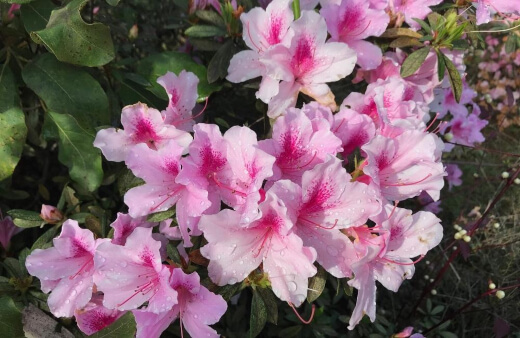 |
Azalea CharlieA smaller growing variety, this shrub produces a wealth of hot pink flower clusters. It’s known to flower quite early and offers a sensory spectacle from March through to November. | 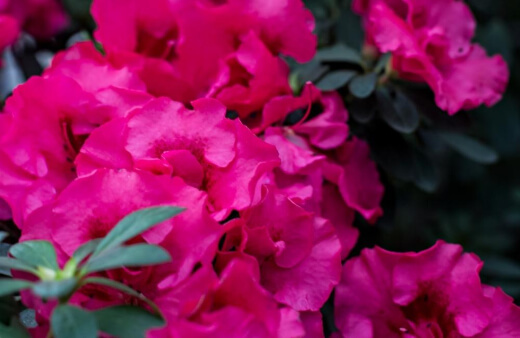 |
Azalea Kurume KirinFor a more delicate appeal, the azalea kirin is a compact shrub with rosy pink blossom clusters. This variety thrives in both sun and shade and is perfect for smaller gardens. |  |
Azalea Orange DelightIf maximum impact is what you’re after, consider the orange delight. This hardy variety produces a wealth of stunning red-orange flowers throughout the spring. | 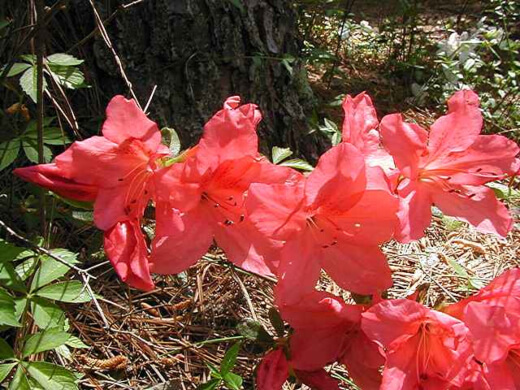 Source: pbase.com |
Azalea Alba Magnifica

Source: warners.com.au
A gorgeous, white-blooming variety. It’s known to be very hardy, with a vigorous growth rate. The stunning white blooms produce a slight perfume – making it a sensation for the senses.
Azalea Alphonse Anderson

With pink and white tinged flowers, this is a perfect partner for the springtime. This variety is the ideal choice for shaded spots and pots.
Azalea Charlie

A smaller growing variety, this shrub produces a wealth of hot pink flower clusters. It’s known to flower quite early and offers a sensory spectacle from March through to November.
Azalea Kurume Kirin

For a more delicate appeal, the azalea kirin is a compact shrub with rosy pink blossom clusters. This variety thrives in both sun and shade and is perfect for smaller gardens.
Azalea Orange Delight

Source: pbase.com
If maximum impact is what you’re after, consider the orange delight. This hardy variety produces a wealth of stunning red-orange flowers throughout the spring.
How to Grow Azalea

Azaleas look fantastic either when planted alone, or when planted en masse for maximum effect. Plants are particularly noteworthy when planted against a darker, wooded area. They provide a wonderful contrast when planted against conifers or pine.


Get Your Free Guide:
Master Growing Australian Natives eBook
A Must Have Complete Guide for Every Australian Garden
Get Your Free Guide:
Master Growing Australian Natives eBook
A Must Have Complete Guide for Every Australian Garden
Still, you can plant your azaleas however you like, whether in a pot, planter or directly in the ground. The only trick is, you will need to pick the appropriate location for ideal growth.
The plant prefers a slightly cooler, sun-dappled location. Especially in Southern Hemisphere regions, like Australia, where the sun can be particularly scorching, too much direct sun can damage the leaves.
Equally so, too little sunlight can inhibit growth and bloom. Ideally, you’ll want to pick a spot with a good level of morning sunshine and afternoon shade.
Azaleas need well-draining, slightly acidic soil to thrive. It is advisable to pre-treat soil before planting for the best results. If you’re concerned that soils offer poor drainage, consider growing in raised beds instead.
For container growing, pick a good quality potting soil and ensure pots have plenty of drainage holes at the bottom.
Propagating Azalea Plant
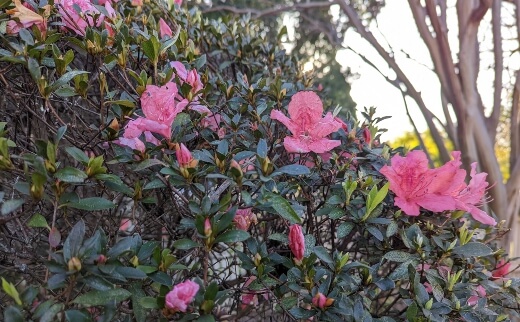
Azaleas can be pretty easily propagated from both stem cutting and seed. Many growers opt for stem cuttings as this better guarantees the look of the plant when mature.
Seeds can sometimes be a cross between two different varieties, meaning that flowering and growth are not always identical to the parent plant.
Ideally, you’ll want to take a semi-hardwood stem cutting for the best results. Here is what you’ll need to do:
- Prepare a small pot with a rich, organic potting mixture or combination of peat and perlite.
- Remove a stem cutting from a healthy plant with a sharp, sterilised blade or garden shears. Try to cut just beneath the leaf node.
- Remove leaves along with the lower third of the cutting, leaving 3 to 4 healthy leaves at the tip of the cutting.
- Dip the cut end into a rooting hormone and plant the lower third into the soil.
- Keep your cutting in a warm spot with bright indirect light.
- Water well for the first few days, without waterlogging the soil.
In general, azalea plant cutting takes around 2 months to begin growing roots. After this time, gently tug at your cutting – if you feel some resistance, it has roots! Now, you can start keeping your cutting in some morning sun to promote growth.
Once new growth starts to appear you can move your cuttings into a larger pot or directly into your garden.
Planting Azaleas
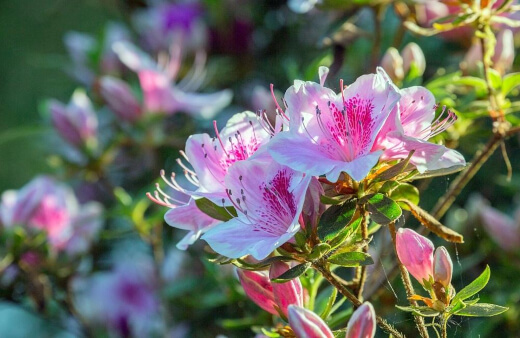
The best time to plant is in the spring. This allows them to establish themselves before the extreme heat of the summer, and the cold chill of winter.
Before planting, it is a good idea to amend your soil slightly, to give your young plants a little bit of a boost. Consider mixing some compost into your soil. This will help to maintain soil temperature, conserve moisture and prevent weeds from growing.
When planting, dig a generous hole, that is wider than it is deep. This plant have a shallow root system, which means they tend to spread rather than grow deep. Attempt to dig the hole at the same depth, where the base of the stem stands at the same height as in the previous post.
Place the root ball into the hole and backfill with soil, gently pressing down to remove air pockets. Water well for the first few days after planting.
Caring for Azalea
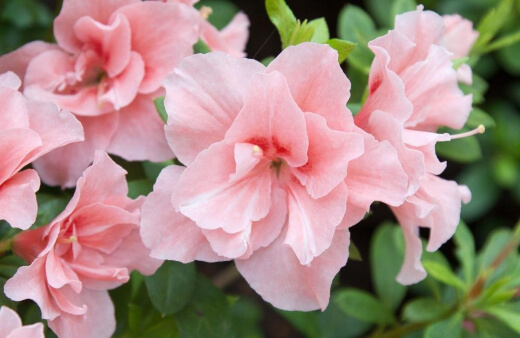
Azaleas aren’t considered to be maintenance-heavy plants, which make them a good choice for beginner growers or those who want a bountiful garden with minimal effort. Still, you’ll need to keep up with summer watering, spring fertilising and autumn pruning.
In summer, you will need to water your plant regularly. Avoid letting the soil dry out completely. Equally so, you don’t want the soil to sit in water. Soak the soil every few days and allow the first 3 to 5 centimetres to dry before watering again.
Most garden guides recommend mulching rather than fertilising, as a means to give your plants a little nutritional nudge. Mulching can be done throughout the year. See our complete guide on the best types of mulch for the garden to know what, when, and how to use them.
However, if you’re noticing stunted or small growth – your plant may be lacking in nitrogen. Consider pepping up your plant with some nitrogen-rich fertiliser in early Spring.
Pruning can be done in Autumn to help maintain a compact shape and encourage new growth in the next season. Be sure to use a sharp pair of hedging or garden shears to avoid damaging young branches.
If you are in the market for reliable garden shears, be sure to check our review on the best secateurs available online.
Deadheading throughout the flowering season can also help promote new flowers.
Azalea Common Pests, Problems & Diseases
Unfortunately, these plants are known to be susceptible to common garden pests and disease issues. These issues include mealybugs, spider mites, leaf spots and root rot.
Keep an eye on your foliage to notice any issues with bugs or mites. Treat issues with a strong gust of water or insecticidal oil. To avoid root rot, make sure you don’t leave soil sitting in water for too long.
For pots, ensure drainage holes are freely draining or add some organic matter to improve drainage.
Azalea Frequently Asked Questions

Where do azaleas grow best?
Azaleas do need some dappled sunshine for prolific blooming. While many garden guides will suggest full sun or part shade. In the Southern Hemisphere, it's advisable to avoid the harsh afternoon sun.
Why are azaleas poisonous?
The only downfall of these gorgeous plants is that all parts of the plant are known to contain toxins called grayanotoxins. These can cause varying symptoms when ingested by humans or animals.
Will azaleas come back every year?
Most varieties will return annually. However, a few can be tricky to get to flower again. Ensure you prune your plants mid-summer if you’re noticing that they’re struggling to bloom.
How do azaleas look in the winter?
In winter, azalea plants begin to produce reddish, purple and yellowy foliage. While they are not as appealing as in summer, they won’t be an eyesore either.
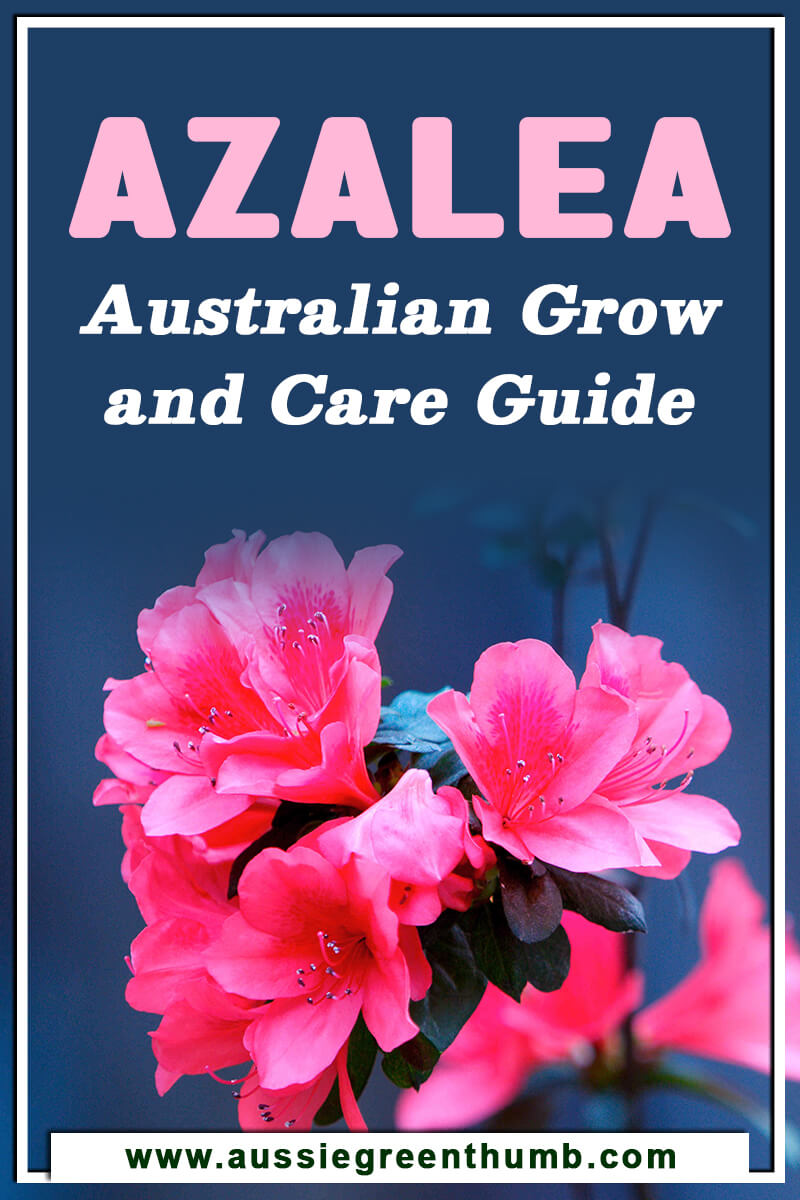
Elevate Your Garden with the Stunning Beauty of Azaleas
Azaleas really are a fantastic choice for Australian gardens. With vibrant blooms and a hassle-free growth habit, they truly make for a fantastic summer garden. Be sure to keep up with your azalea's moisture needs and pruning for the best results.
Published on February 22, 2022 by Maisie Blevins
Last Updated on February 14, 2024




